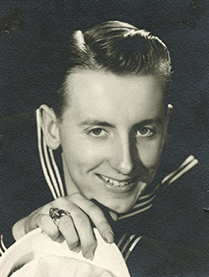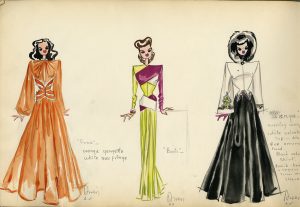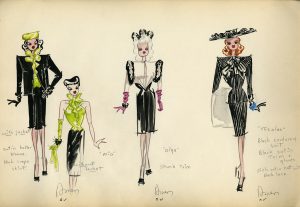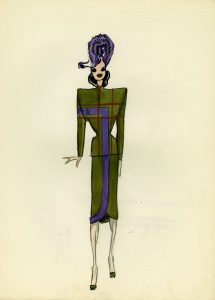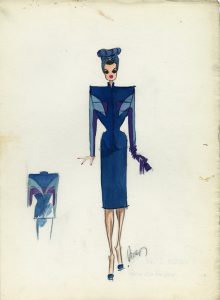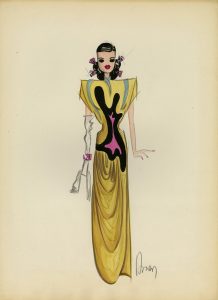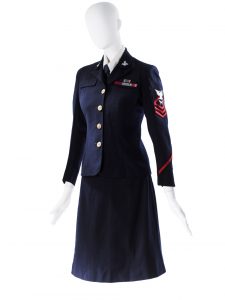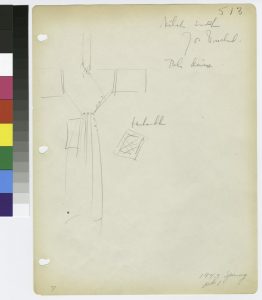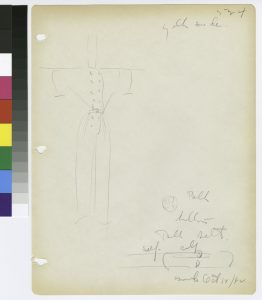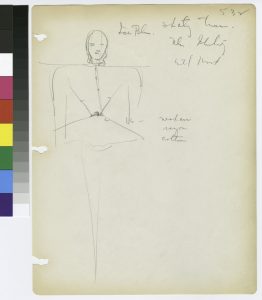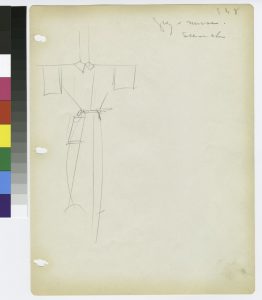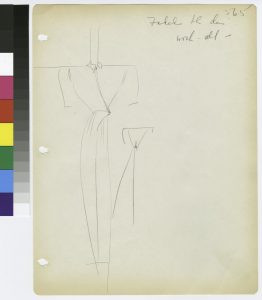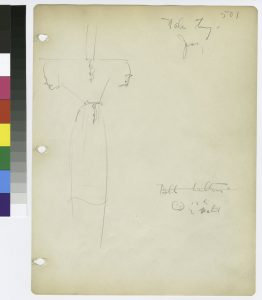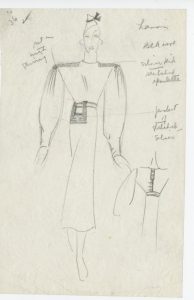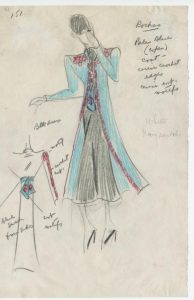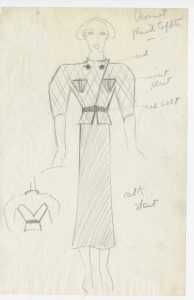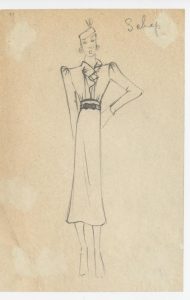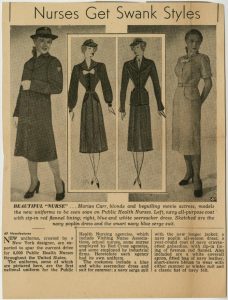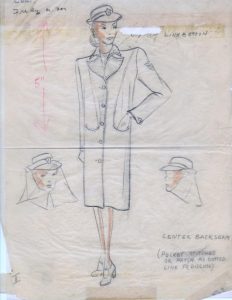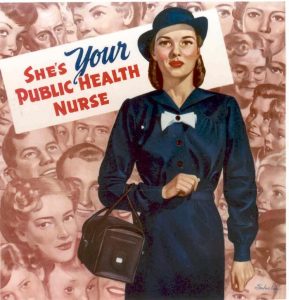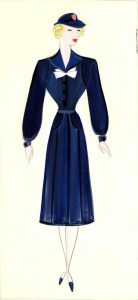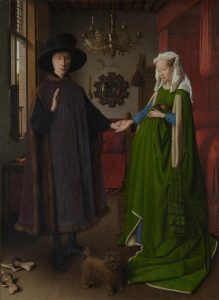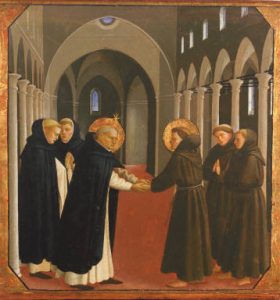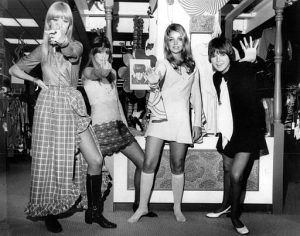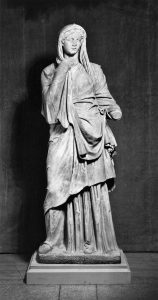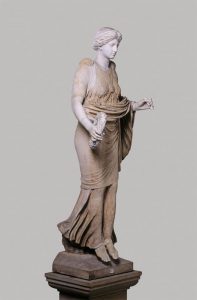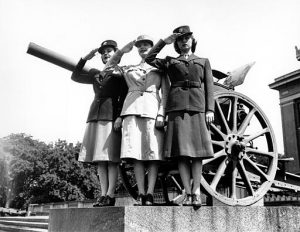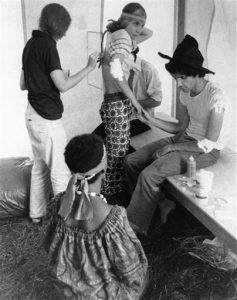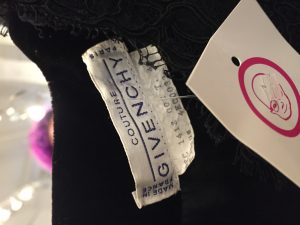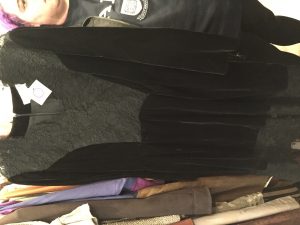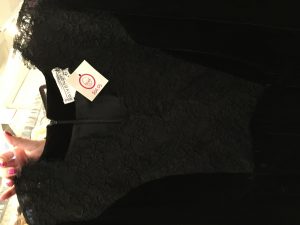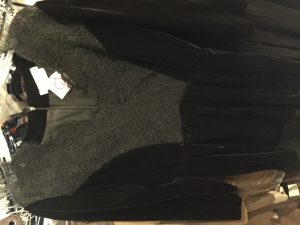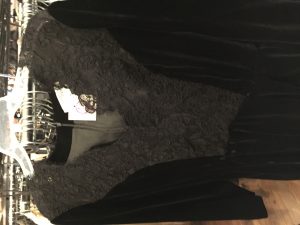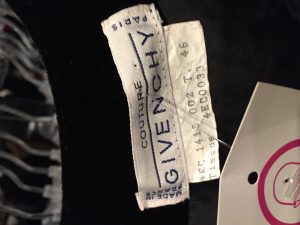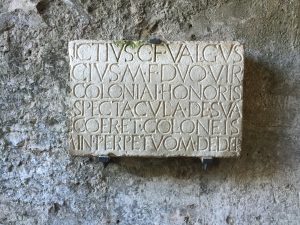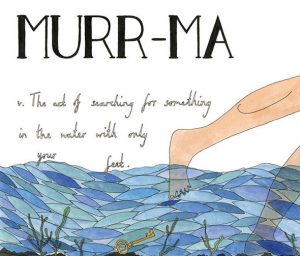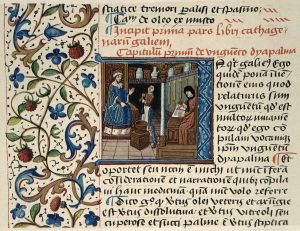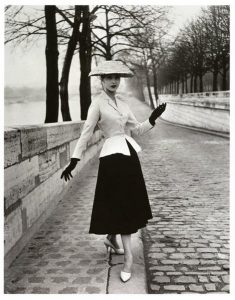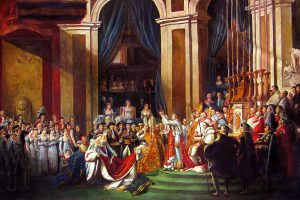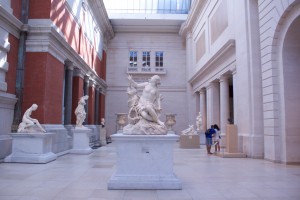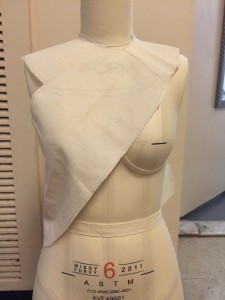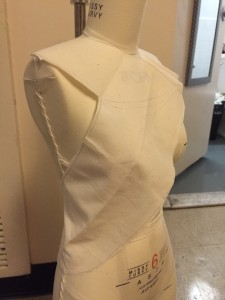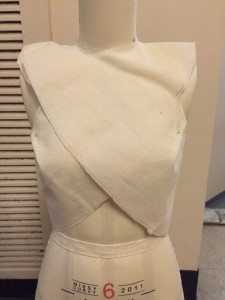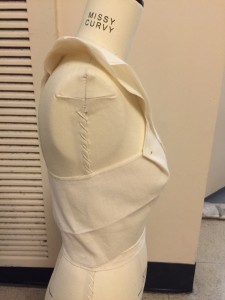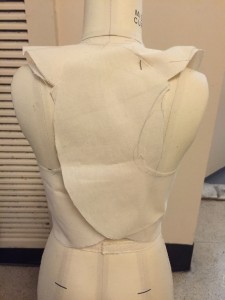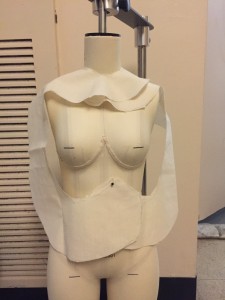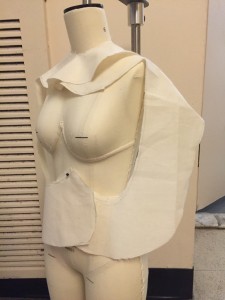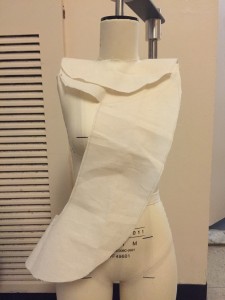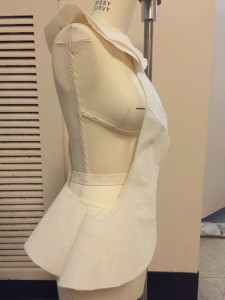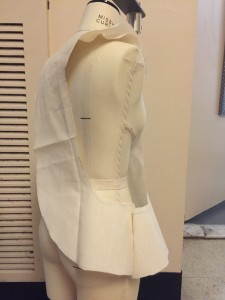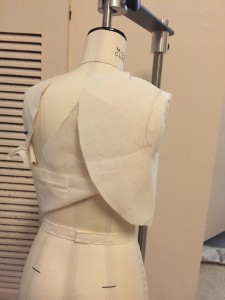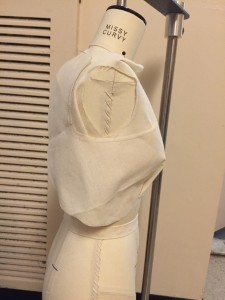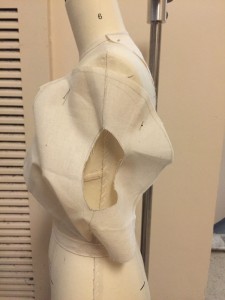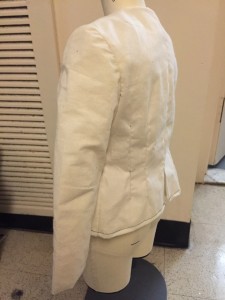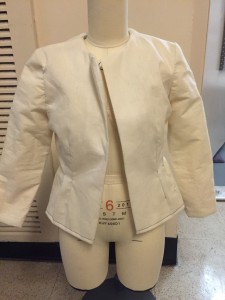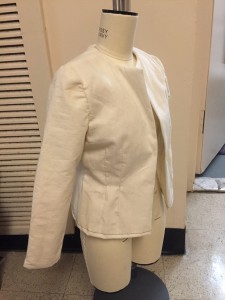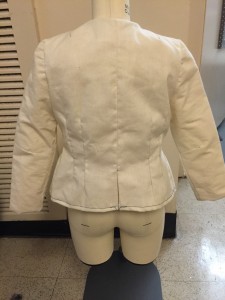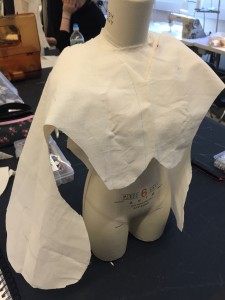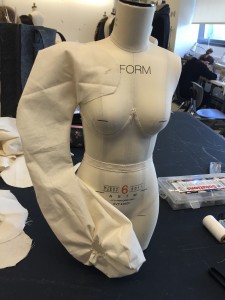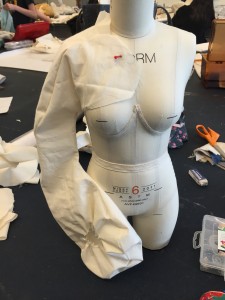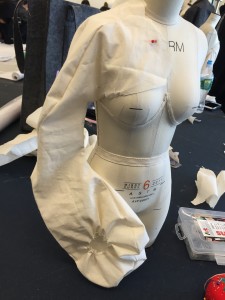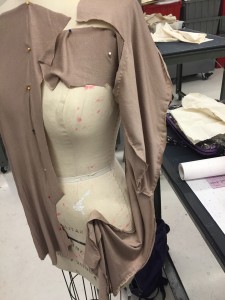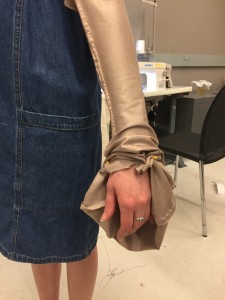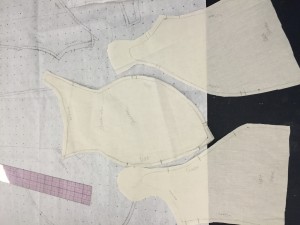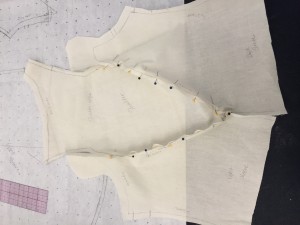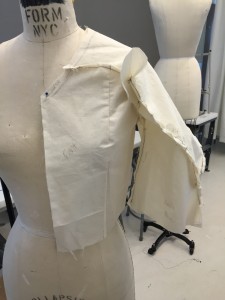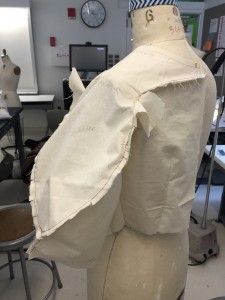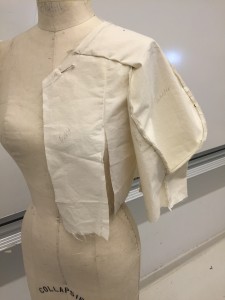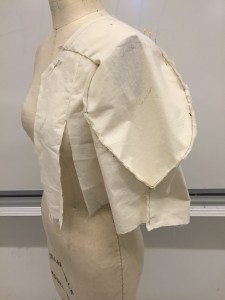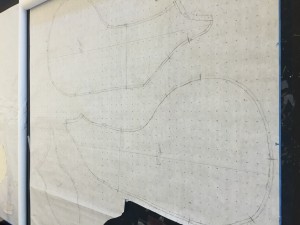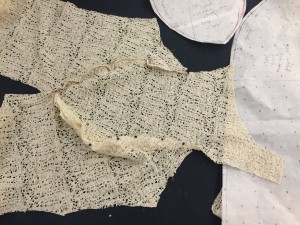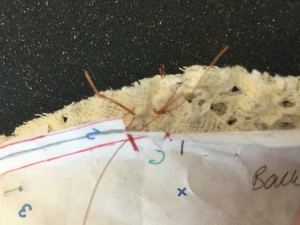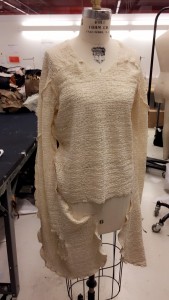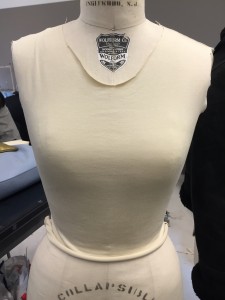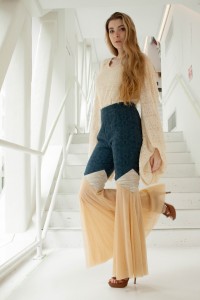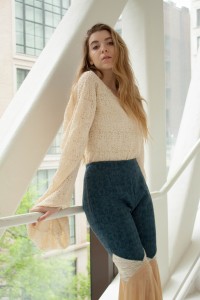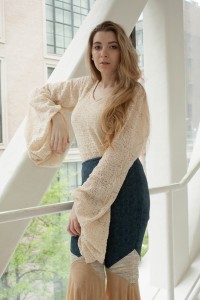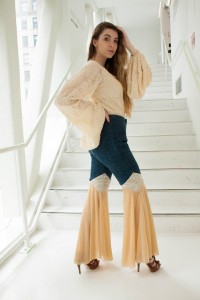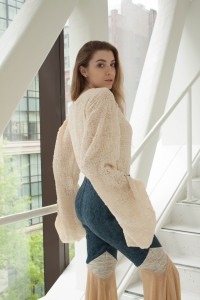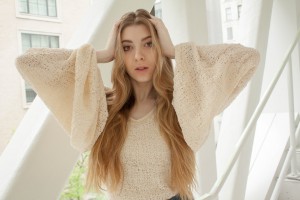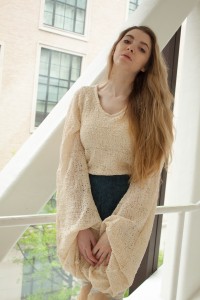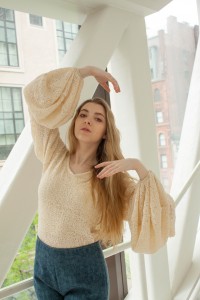- How would you describe the fashion scene of the 1940’s? Would you say that there was a specific language being used by society via their clothing during the war period?
A lot of elements of strong shoulders, taking on a uniform characterized the 1940’s. The silhouette already had basis in 1930’s from Schiaparelli’s wooden soldier, which was also found in Adrian’s gowns, which then comes into the war era. The USA and Britain did have a conscious choice to be more uniform like in their clothing to really get across the war effort. I would recommend reading Rebecca Arnold – The American Look: Fashion, Sportwear, and Image of Women. She talks about the fashion photograph of the time, the image making of fashion.
2. Can you discuss Hitler’s fascination with Fashion? Why do we see this major influence on fashion across different nations during WWII and not WWI?
Irene Gunther, Nazi chic will help you look at Nazi fashion. Fashion is going on in different countries and different elements of the war feeding into them during the period. Paris is silent during this time. This is really affects the rise in American fashion. I would recommend looking into the Berg Library. Nazi Germany really sees this retrograde ideal of femininity enforced by the Nazi party, this progressive country suddenly goes backwards and rejects the decadence of women’s fashion. In the case of Nazi Germany its really specific to Hitler and his separation of the sexes. There is this interest in this decadence and wanting to move the industry to Berlin but also the rejection of the idea of makeup and jewelry and this decadent female. Swing Gugend was a subculture in Germany that kept this decadence, youthful idea. They did things like swing dance which was banned and considered decadence – subculture in Germany, they tried to imitate cinema stars. I would focus on propaganda in one country, look into everything for that one country.
3. What was the language of the period like and how do we see that translated into fashion? How did the identity of women get shifted during this period and would you say there was a confusion in identity for women through what they were being told to wear?
In terms of language and propaganda in fashion – Vogue could be particularly helpful in terms of words like the war effort. WWD and Harpers Bazaar will also be very helpful. An opportunity to look at clothes related to this in magazines. I think fashion is unified in the 1940’s in the U.S. to this iconic femininity being invoked in this, but that women also need to take on men’s roles at any moment. Rebecca Arnold discusses this in Goodbye To All That. She is regarding herself as leaving behind this flowing femininity and the strongest keynote of the style is the militaristic role. You could also look at LIFE magazine online because they were a force for propaganda and popular culture at the time.
4. In terms of the zoot suit and the zoot suit riots, was the suit around before the war period and was it as racially charged before the war and riots?
The Zoot Suit riots would overlap with the idea of propaganda. Before the war it was related to a dance culture of jazz and Latinos during the 30’s. It is a youthful dress but not threatening in any way. The Zoot Suit was completely against L-85. It was regulation but not law, but it was flouting the war effort. It was perceived as such and these men were being drawn into the war effort. If you were drafted, you lost your value as a person and citizen if you were Latino or African America. So the war effected these men in a different way than rest of the culture and other men.
